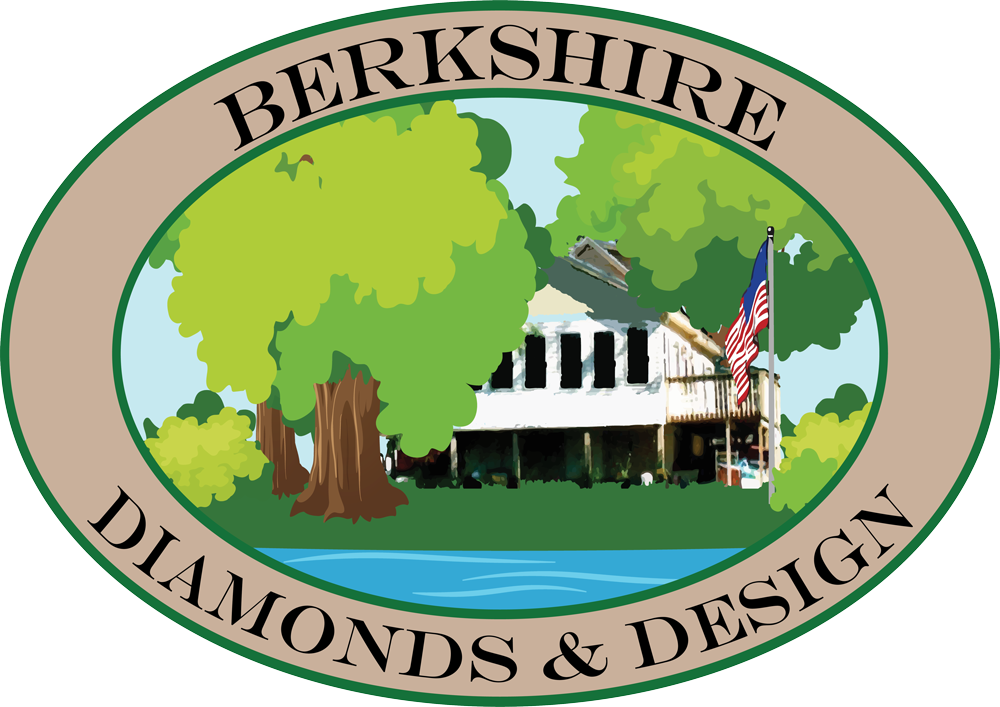
Learn About Lab Grown & Synthetic Diamonds
Production of a Lab Grown Diamond
High Pressure, High Temperature (HPHT)
One of the methods used to create laboratory-grown synthetic diamonds is the High-Temperature High-Pressure (HTHP) technique (GE POL), using a four-anvil ‘tetrahedral press,’ or six-anvil ‘cubic press.’ A diamond seed is placed into a growth chamber and a combination of heat and pressure is applied to the ‘seed’ in a process that attempts to replicate the natural conditions for diamond formation. The HTHP growth process can take 7 to 10 days to complete. High Pressure High Temperature (HPHT): This technique simulates the natural conditions prevalent in the Earth’s mantle where diamonds are formed. By applying high pressure and elevated temperatures, carbon transforms into a diamond crystal.
Chemical Vapor Deposition (CVD)
The ‘Chemical Vapor Deposition’ method was developed in the 1980s and uses a lower pressure growth-environment than HTHP. A seed or ‘substrate’ is placed in the growth chamber and a combination of heat and pressure is applied while vaporized carbon plasma, combined with hydrogen is applied (deposited) to the substrate in layers. Chemical Vapor Deposition (CVD): This method involves the ionization of a carbon-rich gas within a vacuum chamber. As a result, carbon atoms are deposited onto a substrate in successive layers, ultimately forming a diamond crystal.
Lab Grown diamonds have grown in popularity in the past few years and will probably continue to do so. They are a viable option for someone who does not necessarily have the budget to buy a natural diamond. While the mining of diamonds works in ebbs and flows, the Lab Grown diamond market will continue to grow as technology advances.
Quality and Grading:
Lab-grown diamonds are evaluated based on the same criteria as natural diamonds, commonly referred to as the 4 Cs: Cut, Color, Clarity, and Carat weight. They can be certified by the same gemological institutions that certify natural diamonds, such as the Gemological Institute of America (GIA) and the International Gemological Institute (IGI).
Advantages:
Ethical Considerations: Lab-grown diamonds are frequently viewed as more ethical compared to mined diamonds, as their production does not involve the environmental and human rights concerns that can be associated with traditional diamond mining.
Environmental Impact: Although the production of lab-grown diamonds involves substantial energy consumption, it typically results in a lower environmental impact compared to conventional diamond mining.
Cost:
Lab-grown diamonds generally come at a lower price point compared to natural diamonds of similar quality.
Market and Availability:
The market for lab-grown diamonds is expanding, with growing consumer acceptance and increased availability in various jewelry outlets. They are offered in a diverse array of sizes, shapes, and colors, similar to natural diamonds.
Advanced gemological equipment is necessary to differentiate lab-grown diamonds from natural ones. This includes the use of specialized microscopes and spectroscopy. Additionally, some lab-grown diamonds feature a microscopic laser inscription that indicates their status as lab-grown.
Lab-grown diamonds present a sustainable and cost-effective alternative to natural diamonds while retaining the same appeal and elegant
Advanced gemological equipment is necessary to differentiate lab-grown diamonds from natural ones. This includes the use of specialized microscopes and spectroscopy. Additionally, some lab-grown diamonds feature a microscopic laser inscription that indicates their status as lab-grown.
Lab-grown diamonds present a sustainable and cost-effective alternative to natural diamonds while retaining the same appeal and elegance.
Types of Man-Made Diamond
Synthetic diamonds are man-made stones. These stones were first produced in the early 1950’s for mainly industrial purposes. Only recently have synthetic diamonds become available for commercial retail purposes. Synthetic diamonds are produced in a laboratory and they essentially have the same chemical composition and crystal structure of a natural diamond. Their physical and visual properties are almost the same as a natural stone as well. Synthetic diamonds are referred to as “Lab Grown”, “Lab-Created”, “Created”, Moissanite, and “Man-Made”.
Cubic Zirconia (CZ)
The oldest of simulated Zirconia’s, are widely available. Once considered a fairly decent diamond replica, the commodity-like availability and vast differences in quality have made the stone synonymous with low-cost fashion jewelry. CZ’s are fairly hard, 8-8.5 on the Mohs Scale, but only slightly harder than most semi-precious gemstones. CZ’s do have a tendency to show fluorescence and will cloud over time.
Moissanite
Moissanite, lab diamonds are more affordable than their naturally mined diamond counterparts, you save up 30% or more. Moissanite was discovered in 1893 in Arizona by Nobel Prize winner Dr. Ferdinand Henri Moissan in Diablo Canyon, site of a crater formed by a huge meteorite that struck the earth 40 thousand years ago. Dr. Moissan discovered bits of what looked like tiny diamonds. In 1905, these “tiny diamonds” were analyzed as silicon carbide, which was named Moissanite in honor of Dr. Moissan. Moissanite is extremely hard, rating a 9.25 on the Mohs Scale (diamond is 10.0). Its refractive index (brilliance) is slightly higher than diamond and it possesses twice as much fire diamond
